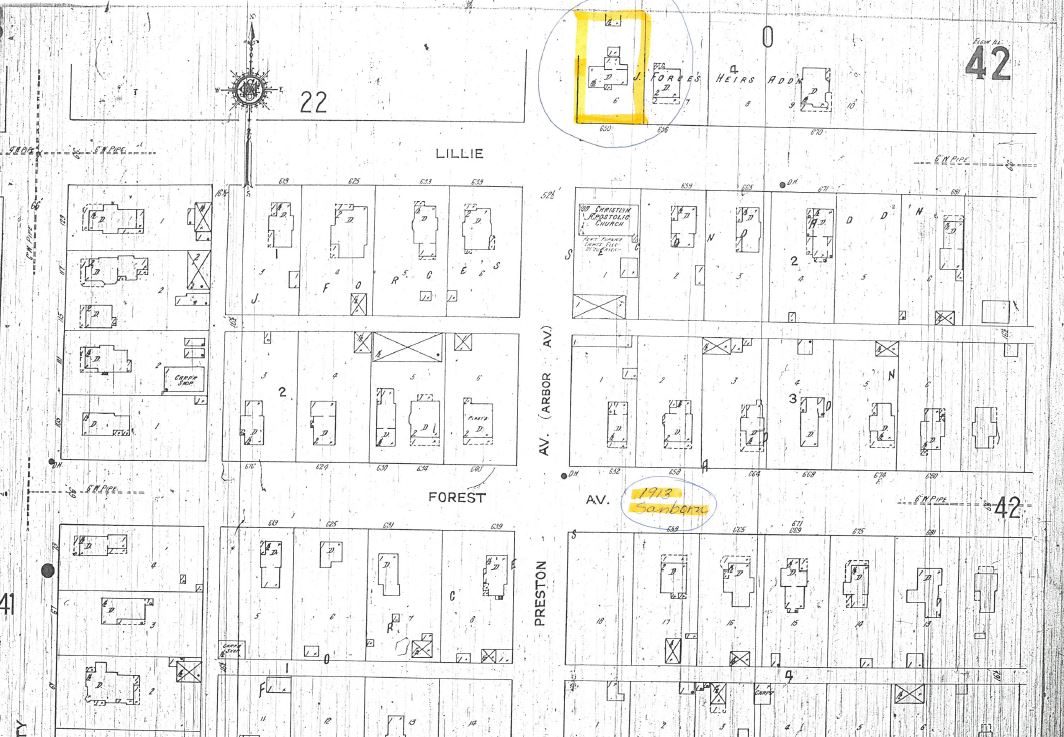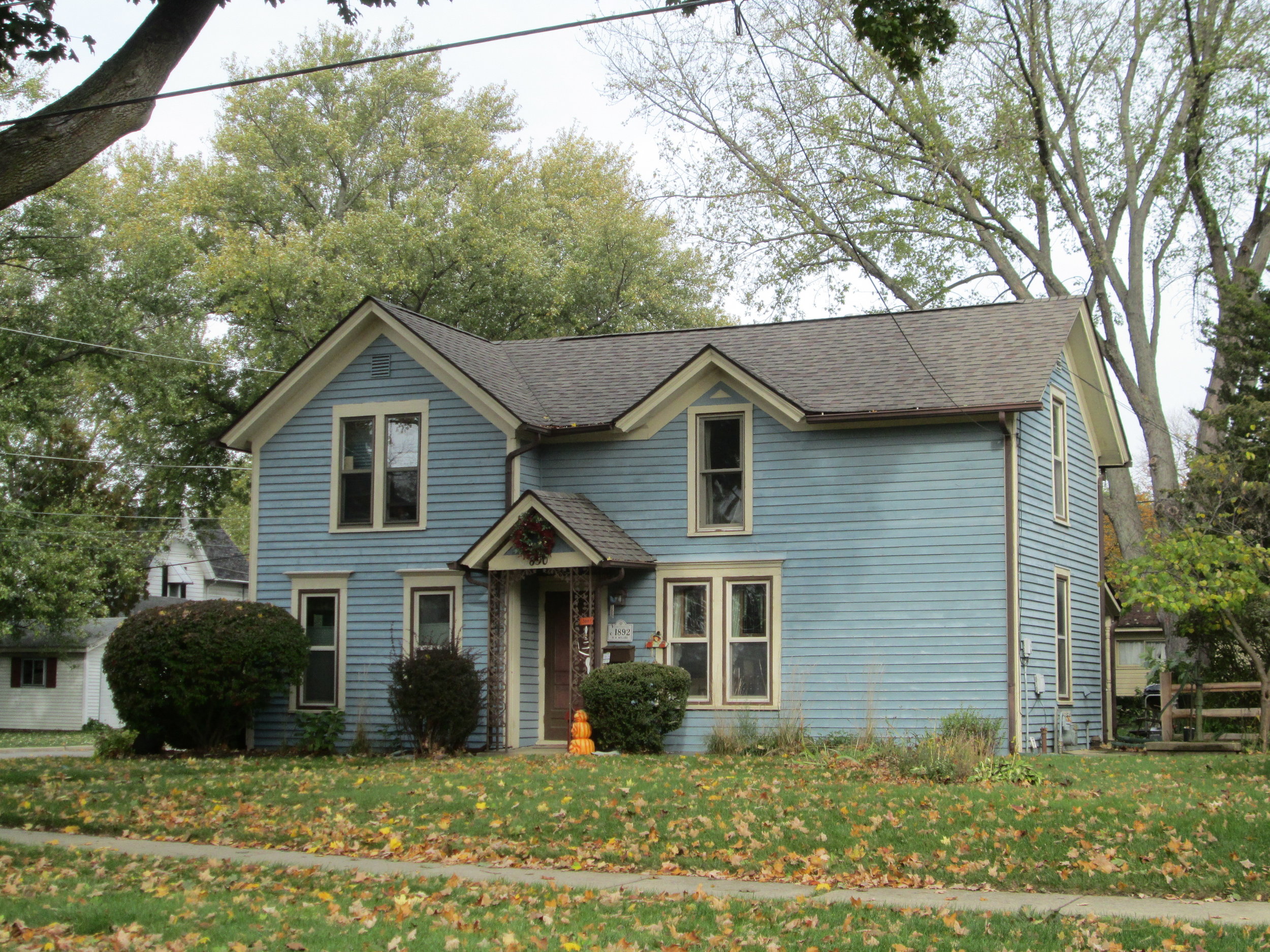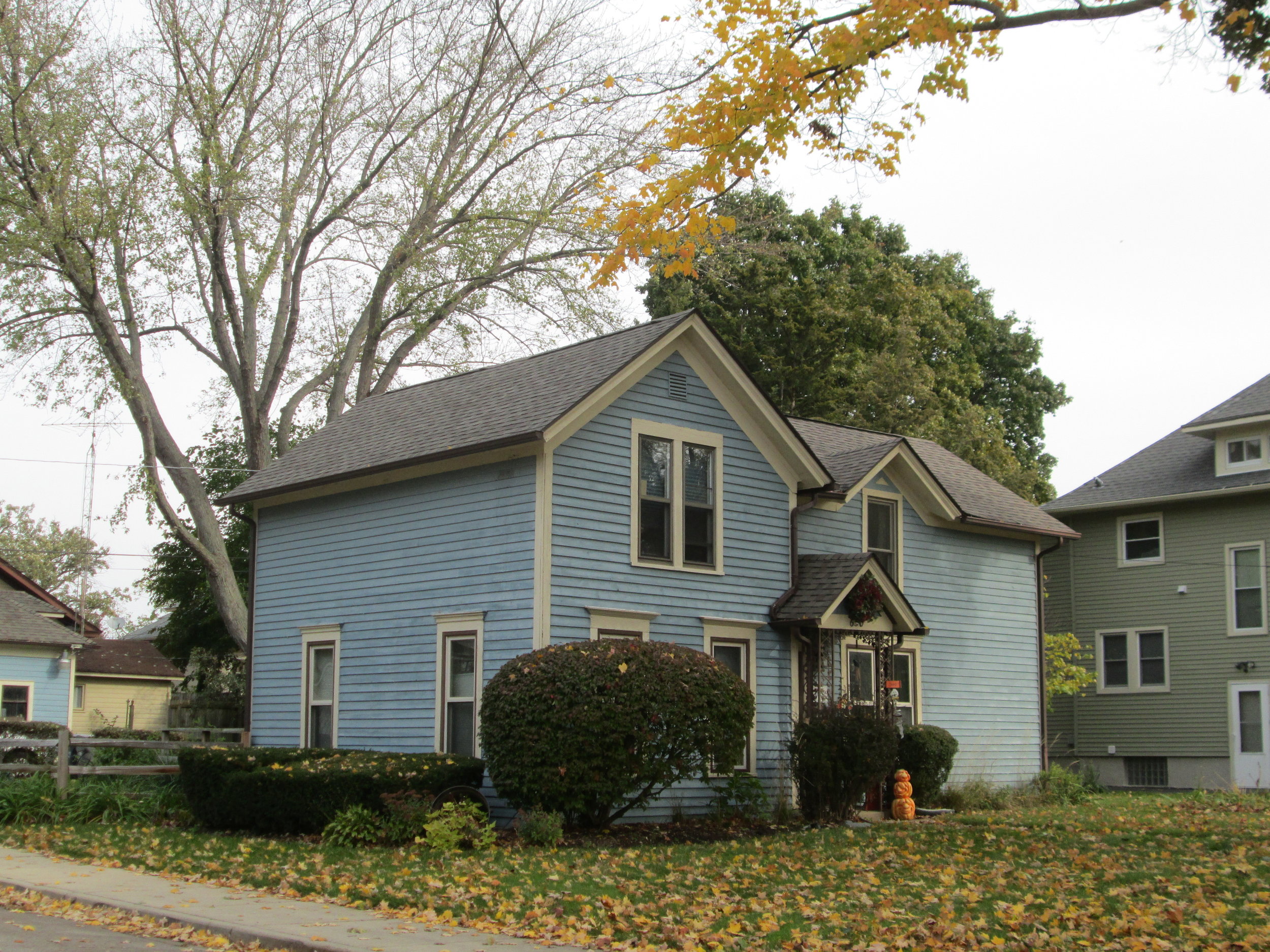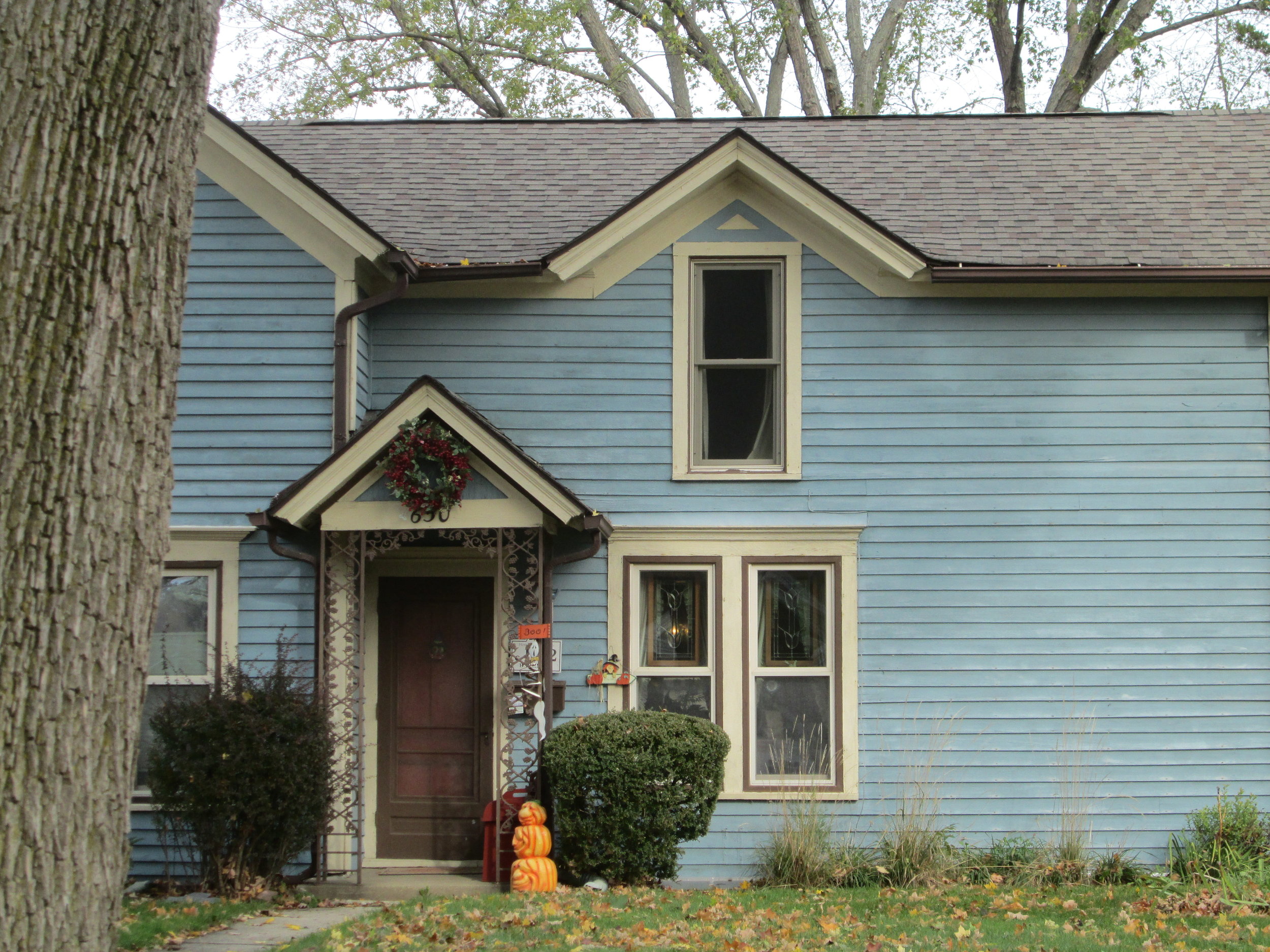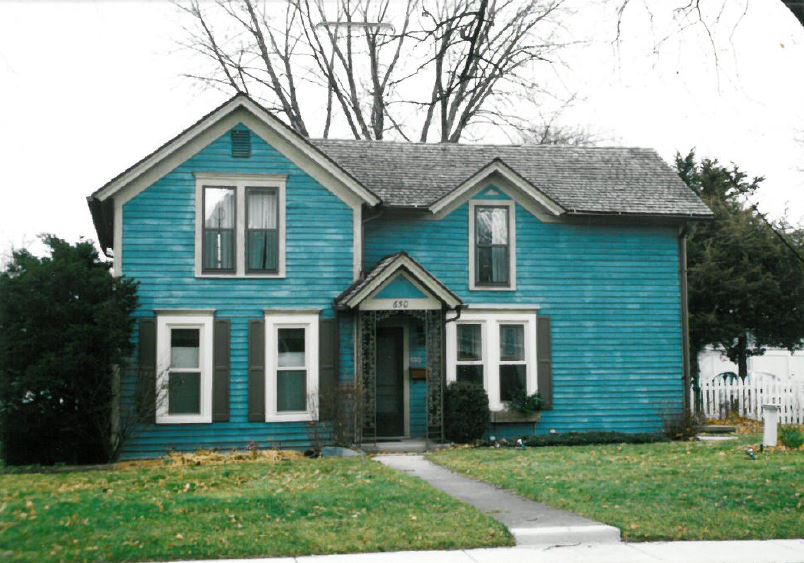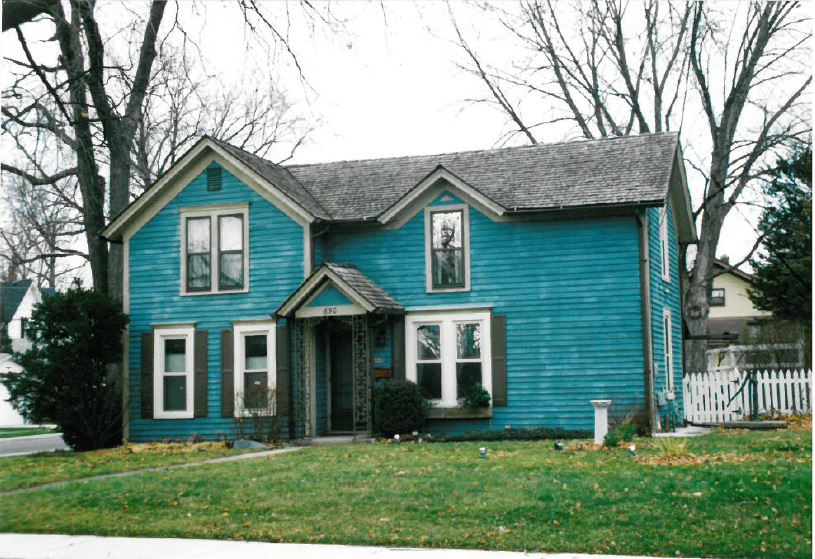650 LILLIE STREET
HISTORIC SIGNIFICANCE
Located in the Jonathan Force’s Heirs addition, 650 Lillie Street was technically acquired by Henry H. Miller in 1888, when Force and Miller entered an agreement to sell a portion of the addition’s land. When Force died unexpectedly later that year, Miller embarked on using legal proceedings to ensure Force’s agreement was kept in place posthumously. Some records and maps indicate that a home may have already been located on the property prior to Miller’s official acquisition and may have provided a heightened impetus for the promised procurement.
In 1918, Henry H. Miller, Jr. inherited the house at 650 Lillie Street. Shortly thereafter, he quit claimed the property to Emma Burns and her husband, William. The Burns’ son, Milton, started the Burns Pharmacy on the southwest corner of Bluff City Boulevard and St. Charles Street in 1937.
Then, and now, pharmacies play an important role in our lives, but this pharmacy was particularly special. Boasting a famed recipe for malted beverages, people flocked to the sit-down counter for one of “Burns’ Malts.” No need to travel back in time to try one of these, however, as the original owners of Al’s Café and Creamery bought the recipe from Burns’ Pharmacy. Al’s is still a popular spot for malts today, and is also a plaqued property, located at 43 DuPage Court.
In 1950, Milton Burns quit claimed his inherited interest in 650 Lillie to his sister, Edna Burns Anderson, who became sole owner of the house until 1978 when she sold the property.
ARCHITECTURAL SIGNIFICANCE
650 Lillie Street is an example of the relatively simple and plain Gable-Front and Wing style. As the railroad allowed for a wider distribution of materials not necessarily locally sourced, homes of this sort because more commonly two, rather than one, stories tall, as the materials needed for construction became easier to transport.
This two-story, L-shaped floor plan, single-family home exhibits wood clapboard exterior siding with wood 1-over-1 double hung windows. Marked in the in the Illinois Urban Architectural and Historical Survey for Lord’s Park as contributing to the local significance of the neighborhood, the estimated original date of construction is c. 1870.
TIMELINE OF PREVIOUS OWNERS
Sources: 1999 Heritage Plaque Application; Audio: TextAloud
